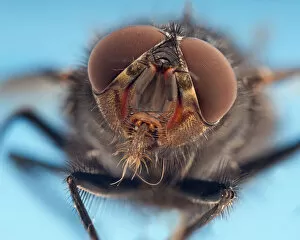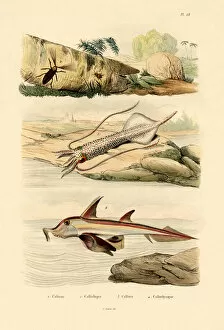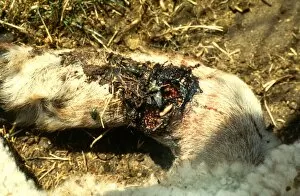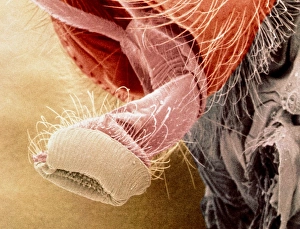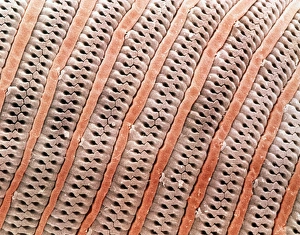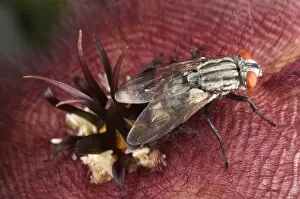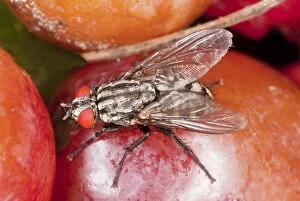Flesh Fly Collection
The flesh fly, scientifically known as Sarcophaga, is a fascinating creature that belongs to the family of flies called Sarcophagidae
All Professionally Made to Order for Quick Shipping
The flesh fly, scientifically known as Sarcophaga, is a fascinating creature that belongs to the family of flies called Sarcophagidae. This portrait of the flesh fly showcases its unique features and intricate details. One particular species, Wohlfahrtia magnifica, also known as the screwworm fly, is notorious for causing wounds in animals. Its larvae infest open wounds and feed on living tissue, posing a serious threat to livestock and even humans. In an intriguing coloured engraving from 1833-39, we see a depiction of a squid entangled with the flesh fly. This artwork captures the interaction between these two creatures in an artistic manner. Found in Europe's forests, specifically in Baden-Wuerttemberg, Germany, the gray flesh fly (Sarcophaga carnaria) displays its distinctive appearance against a natural backdrop. These flies are commonly found resting on leaves during their adult stage. During summer months in France's Auvergne region, both Flesh Flies (Sarcophaga sp. ) and Noon Flies (Mesembrina sp. ) can be seen en masse covering cow dung. This behavior highlights their preference for decaying organic matter as a food source. A closer look at the proboscis of this remarkable insect reveals its complex structure through colored scanning electron microscopy (SEM). The proboscis plays a crucial role in feeding by allowing them to extract nutrients from various sources. Not limited to just one continent or ecosystem type; New World Screwworm Pupa belonging to Wohlfahrtia sp. , demonstrates how diverse this group can be across different regions around the world.

